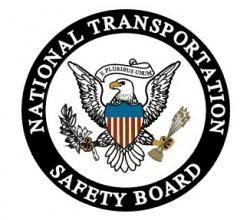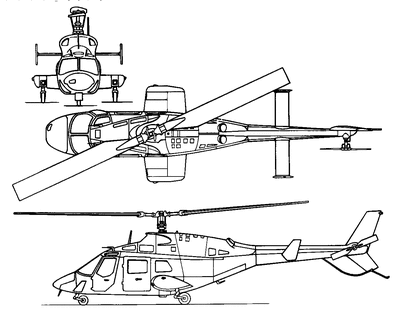Tail Rotor Blade and Pitch Change Links Found Damaged
 Every time I start getting lax about my pre-flight habits, a
perusal of recent NTSB accident summaries brings me back to
reality... and makes me far more attentive to the process of making
sure that my aircraft truly is ready for flight. Here's one more
case in which some extra attention could have prevented a lot of
damage... and a potential accident.
Every time I start getting lax about my pre-flight habits, a
perusal of recent NTSB accident summaries brings me back to
reality... and makes me far more attentive to the process of making
sure that my aircraft truly is ready for flight. Here's one more
case in which some extra attention could have prevented a lot of
damage... and a potential accident.
This matter could have ended up FAR worse. -- JRC, E-I-C,
ANN
NTSB Identification: WPR10LA200
14 CFR Part 91: General Aviation
Accident occurred Friday, April 09, 2010 in Santa Maria, CA
Aircraft: BELL 222U, registration: N222UT
Injuries: 3 Uninjured.
This is preliminary information, subject to change, and may
contain errors. Any errors in this report will be corrected when
the final report has been completed.
On April 9, 2010, about 0124 Pacific daylight time, a Bell 222U,
N222UT, owned and operated by California Shock Trauma Air Rescue
(dba CALSTAR), was substantially damaged while standing in
preparation for takeoff from the company's emergency medical
services (EMS) operations base at the Santa Maria Public Airport
(SMX), Santa Maria, California. Neither the airline transport
certificated pilot nor the two flight nurses were injured during
the positioning flight that was performed under the provisions of
14 Code of Federal Regulations Part 91. Visual meteorological
conditions prevailed at the time of the dark nighttime flight, and
a company flight plan had been filed. The flight was originating at
the time of the mishap.
CALSTAR personnel reported to the National Transportation Safety
Board investigator that at SMX, prior to the pilot's 0110 flight
assignment duty call, one of the tail rotor blades had been tied
down to the helicopter's tail boom with a strap. Following the
pilot's engine start operation, as the tail rotor blades began
rotating in preparation for takeoff, the tie down strap broke.

Unaware of the mishap, the pilot departed SMX and flew to the
Marian Medical Center Heliport in Santa Maria (1CL8) and landed
about 0131. Just prior to the pilot's 0242 departure for the EMS
flight with a patient and passenger on board, one of the pilot's
flight nurses who was standing outside the helicopter observed
material attached to the helicopter's tail rotor area. The nurse
brought the anomaly to the pilot's attention. The pilot shut down
the engine and examined the helicopter. Nylon webbing was found
wrapped around the tail rotor's drive shaft. The material was
removed and the pilot inspected the helicopter. Believing that the
helicopter was undamaged, the pilot departed 1CL8 and flew under
Part 135 to a medical facility in Madera, California, landing about
0345.
Thereafter, with better illumination, the pilot performed a more
detailed inspection of the helicopter during which he observed
damage to one tail rotor blade and other anomalies. The pilot
notified CALSTAR's management of his observations, and the
helicopter was immediately taken out of service for repairs.

CALSTAR's director of maintenance (DM) fully assessed damage to
the helicopter following its transport back to the maintenance
base. One of the tail rotor blades was found damaged. Its
associated pitch change links (helicopter components) were also
found damaged. To restore the helicopter's airworthiness, these
items are being replaced prior to further flight.
 ANN's Daily Aero-Linx (11.07.24)
ANN's Daily Aero-Linx (11.07.24) ANN's Daily Aero-Term (11.07.24): Maximum Authorized Altitude
ANN's Daily Aero-Term (11.07.24): Maximum Authorized Altitude Aero-News: Quote of the Day (11.08.24)
Aero-News: Quote of the Day (11.08.24) Airborne-Flight Training 11.07.24: CFI Changes, DPE Symposium, Evektor Harmony
Airborne-Flight Training 11.07.24: CFI Changes, DPE Symposium, Evektor Harmony Classic Aero-TV: Of Old Crows and Young Hearts
Classic Aero-TV: Of Old Crows and Young Hearts





